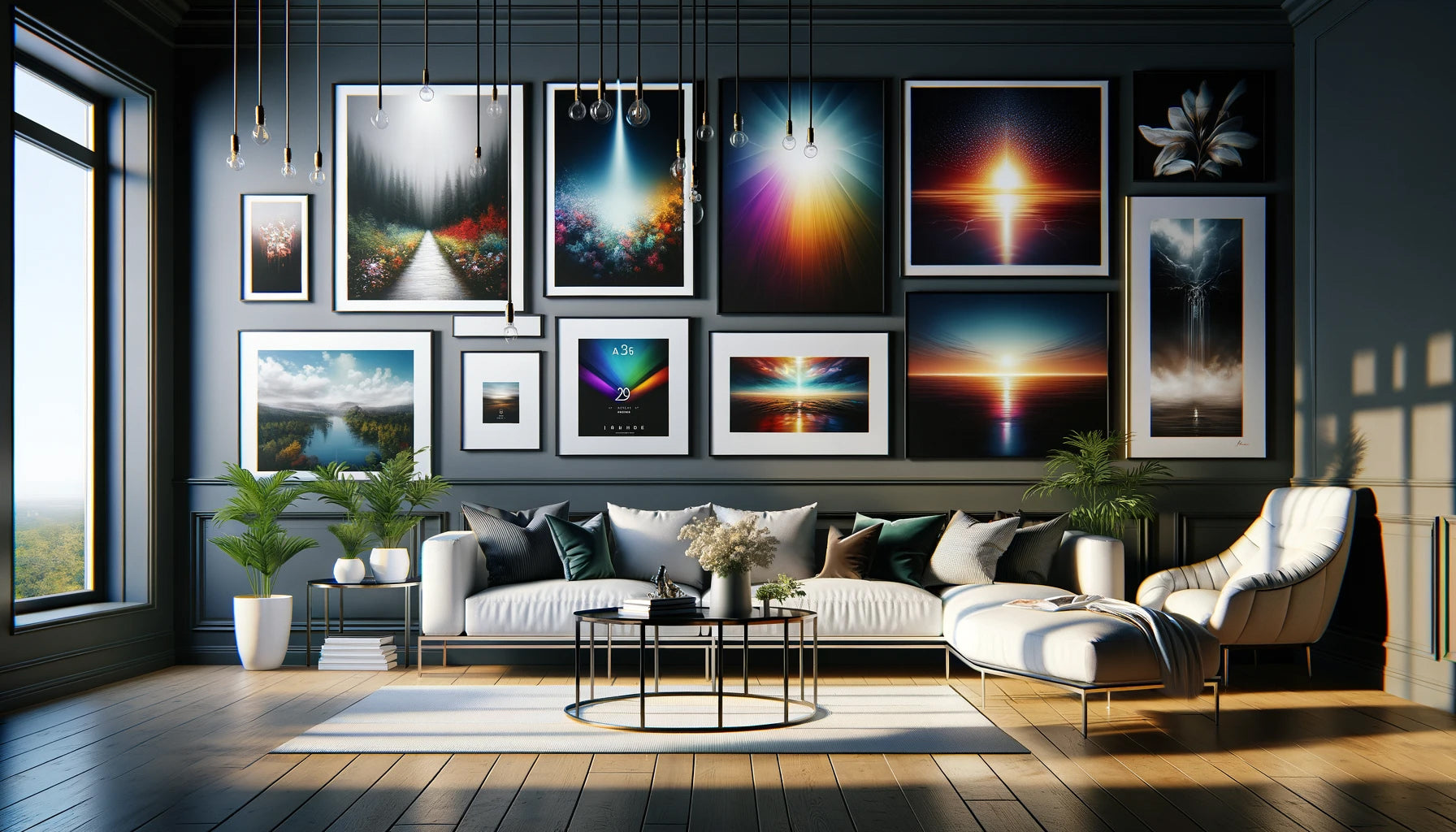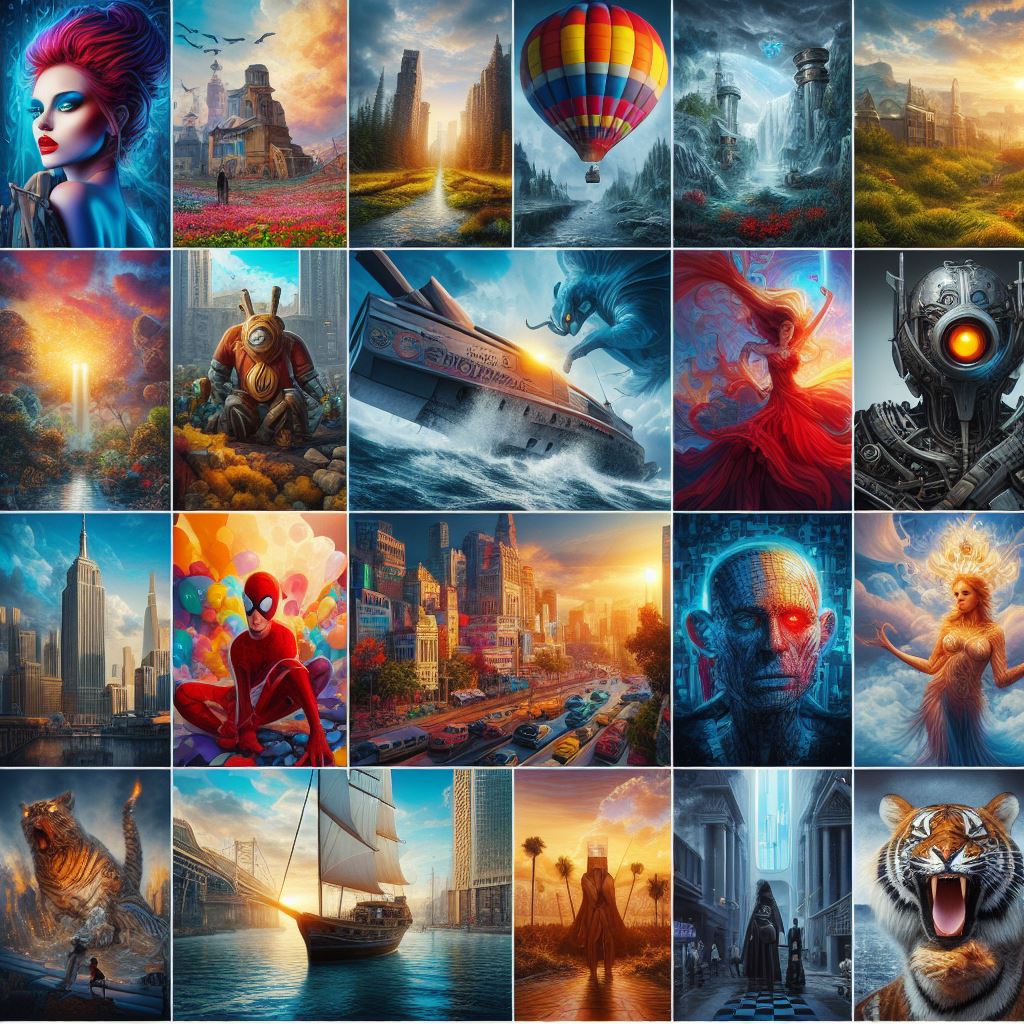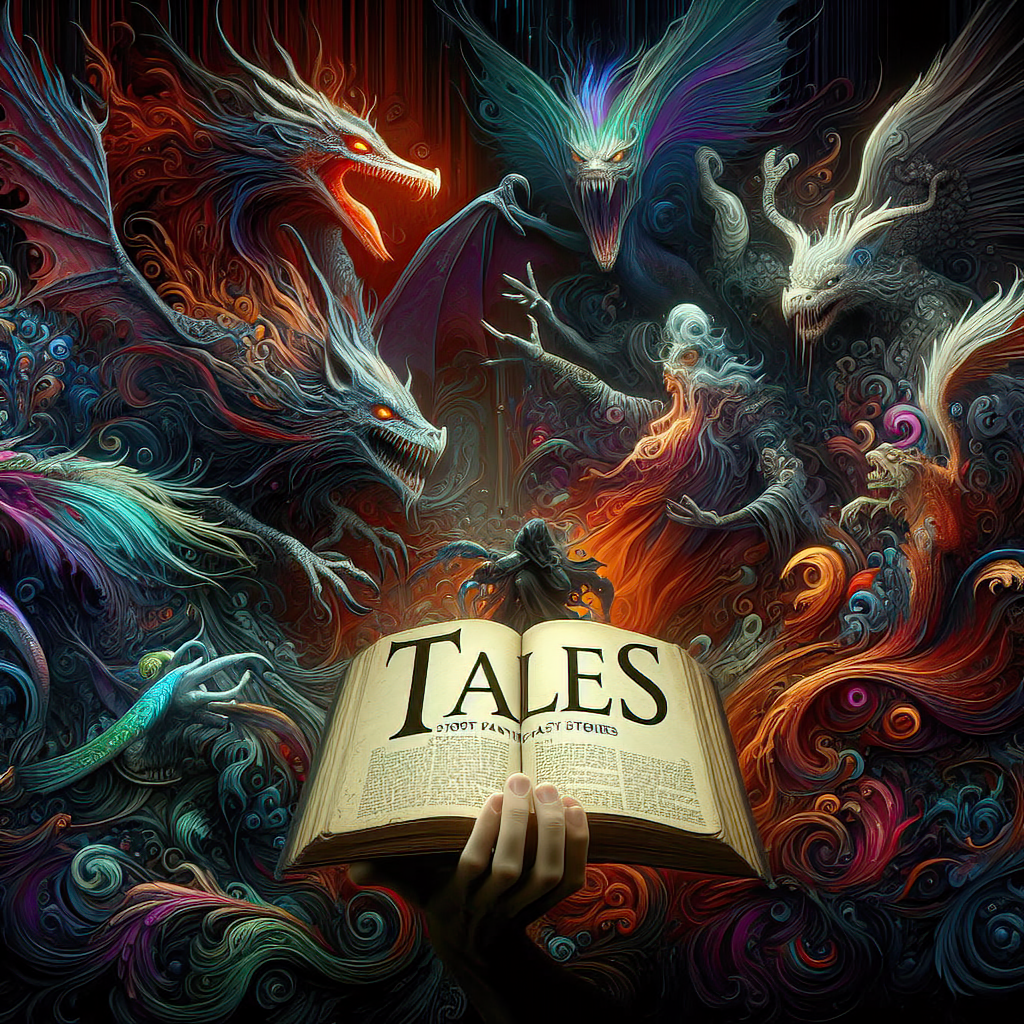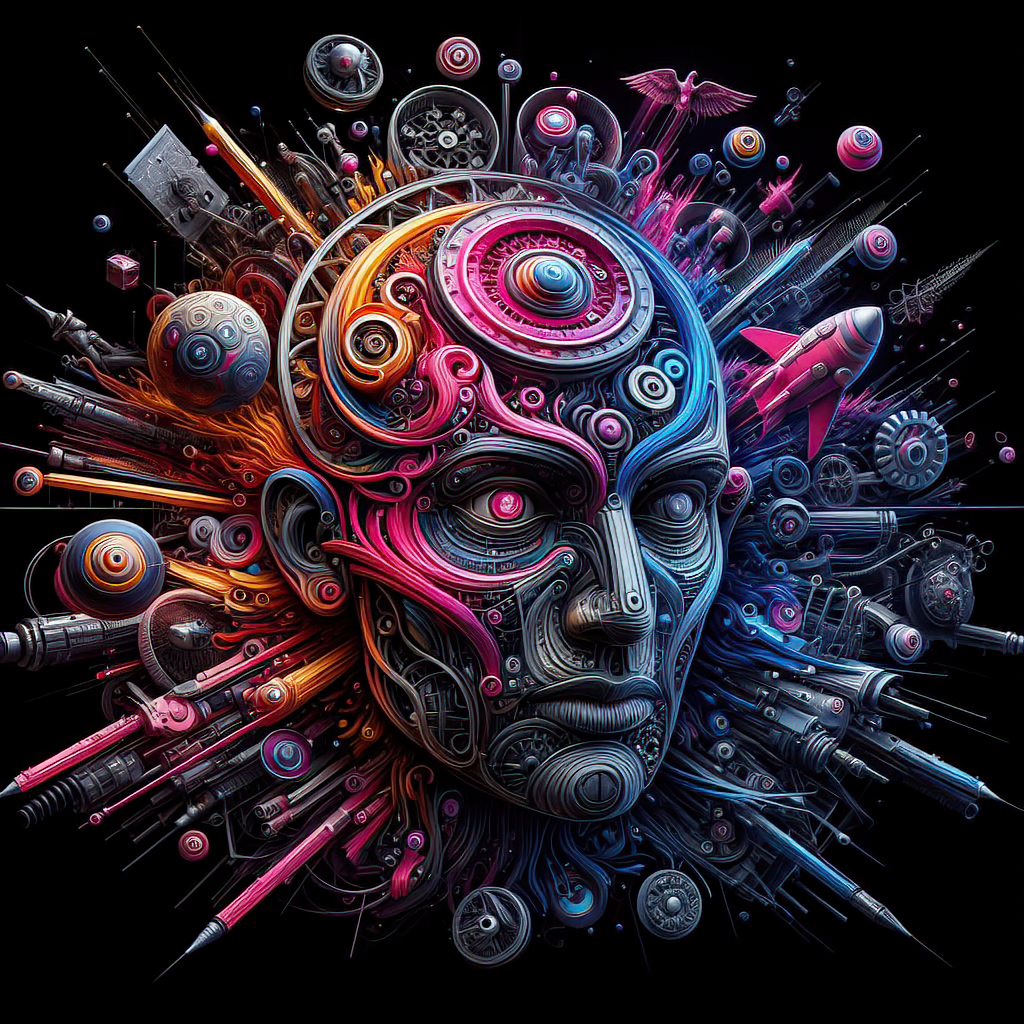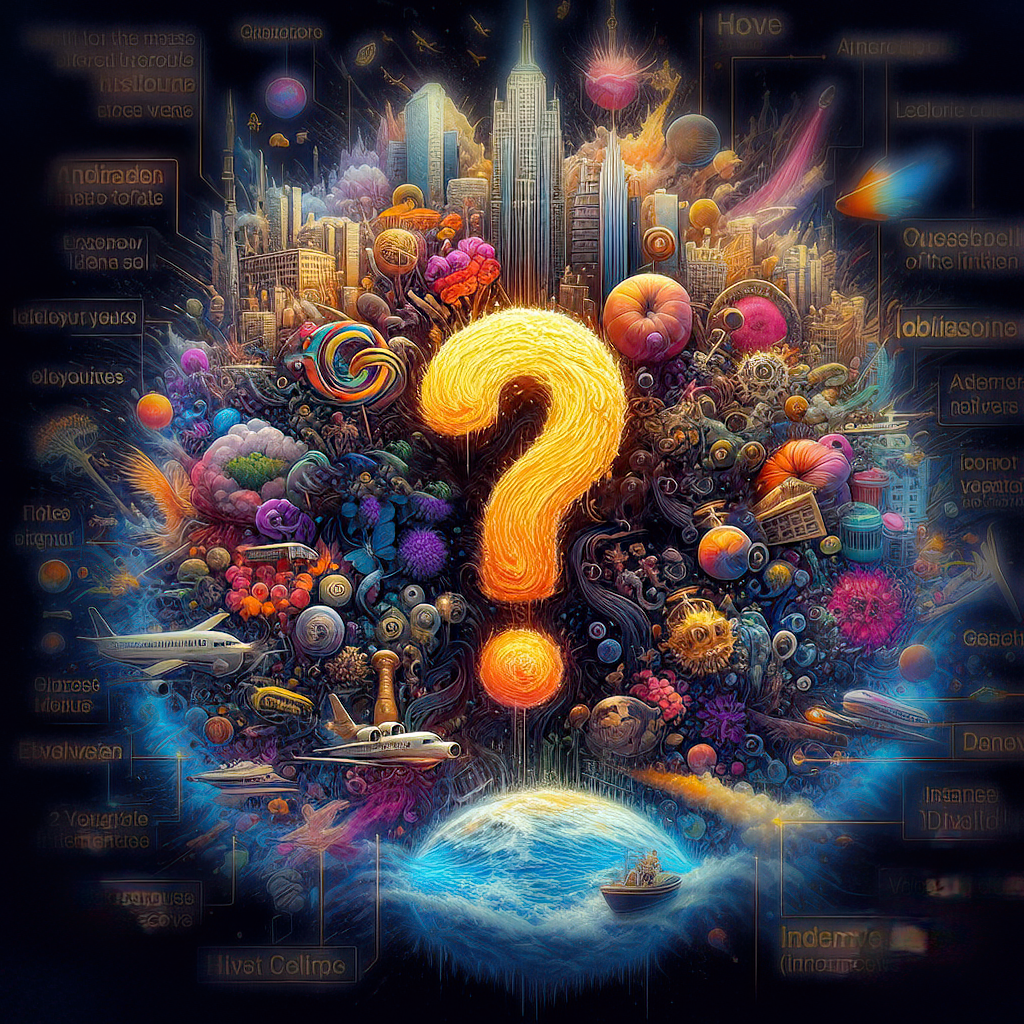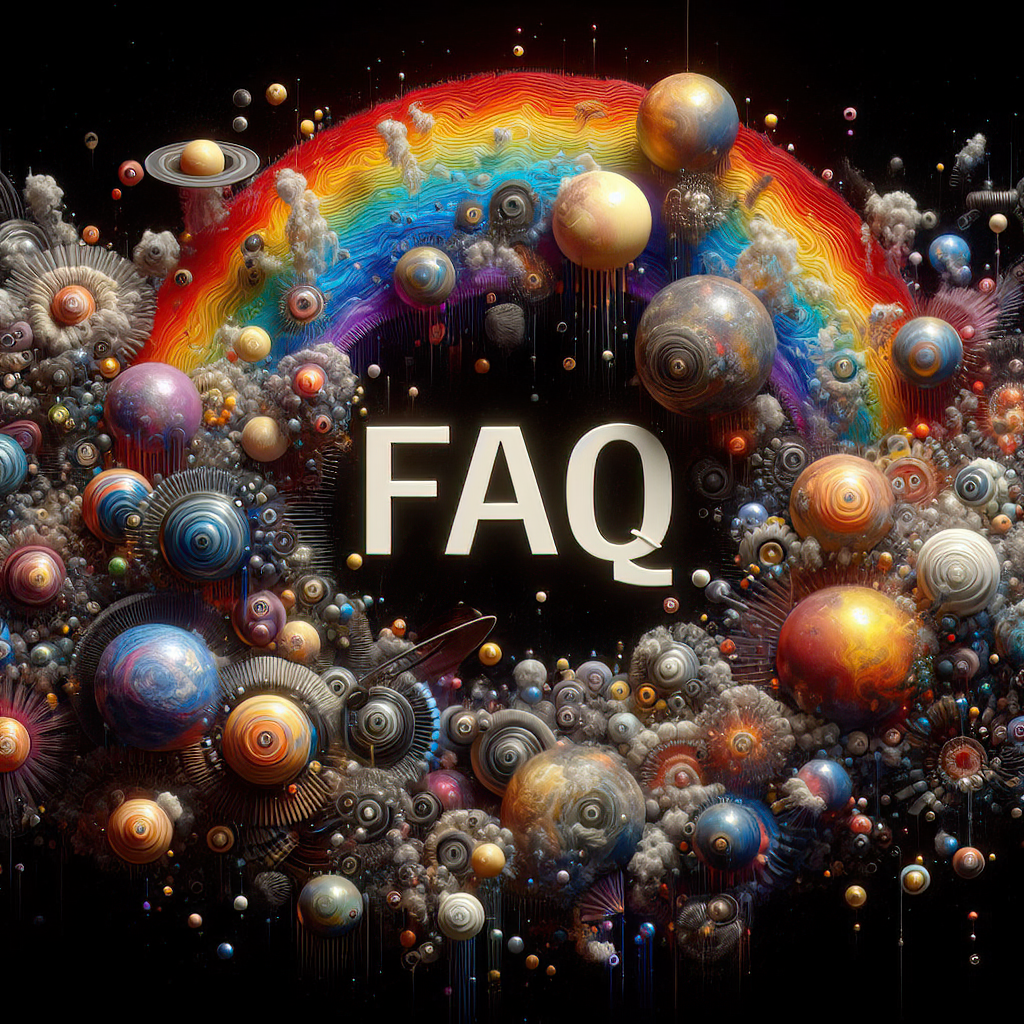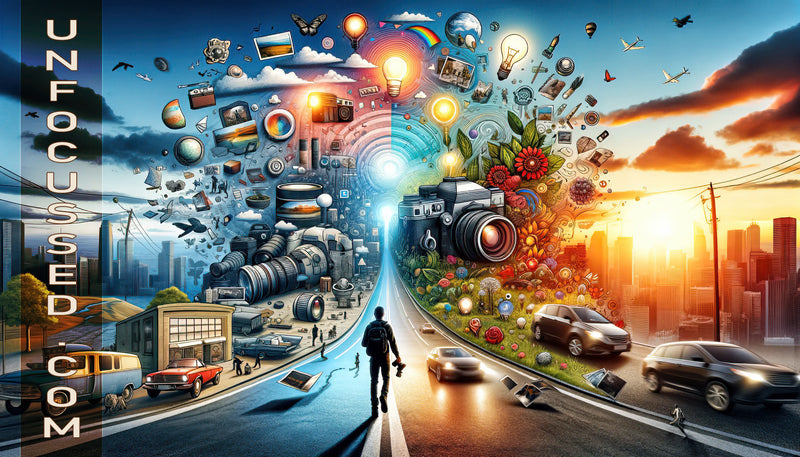
by Bill Tiepelman
Crafting Personal Style in Photography: Embracing Tradition and AI Innovation
In the vast and ever-evolving world of photography, finding your own personal style is akin to discovering your voice in a crowded room. It's not just about mastering the technical aspects; it's about how you choose to see the world through your lens. This journey of self-discovery is both challenging and exhilarating, offering a unique opportunity to express your individuality and view of the world. Whether you are an aspiring photographer or a seasoned hobbyist, developing a distinctive style is crucial in setting your work apart from the myriad of images flooding our visual space daily. In this comprehensive guide, we'll embark on a journey to uncover the essence of personal style in photography, drawing inspiration from the past, embracing the present, and looking forward to the future innovations, particularly the impact of Artificial Intelligence (AI). We'll explore how to find inspiration, the importance of experimentation, the role of tools and techniques, and finally, how AI is reshaping the creative landscape. This is your first step towards not just being a photographer, but becoming an artist. Understanding Personal Style Personal style in photography is the unique signature that distinguishes your work from others. It's the consistent theme, mood, or perspective that resonates through your photos, making them recognizably yours. But this goes beyond just a preferred subject or color scheme; it's about how you interpret the world, your emotions, experiences, and perspectives. Think of it as your photographic fingerprint. Historically, great photographers are remembered not just for the images they captured but for the unique perspectives and styles they brought to the photography world. From Ansel Adams’ majestic landscapes to Dorothea Lange's poignant human portraits, each had a distinct style that spoke volumes beyond the mere subjects of their photographs. Today, with the proliferation of digital cameras and social media, developing a unique style is more crucial yet challenging than ever. It requires introspection and an understanding of your influences and aspirations. Ask yourself, what draws you to photograph certain subjects? What emotions or stories are you trying to convey? Your personal style should be a reflection of what you find beautiful, fascinating, or important. Remember, developing a personal style is a journey, not a destination. It evolves with you over time, influenced by your experiences, changes in your perspective, and new inspirations. This evolutionary process is what keeps photography exciting and deeply personal. Finding Your Inspiration Inspiration is the spark that ignites the flame of creativity in photography. But finding that spark in a world inundated with images can be daunting. The key is not to seek new landscapes, but to view the familiar with new eyes. Here are some strategies to help you find your inspiration: Explore Various Art Forms: Don't limit your inspiration to photography alone. Explore other art forms such as painting, literature, music, and cinema. Understanding different artistic languages can enrich your visual vocabulary and open new avenues for creative expression. Nature and Urban Exploration: Both natural landscapes and urban environments offer an endless source of inspiration. Whether it’s the serene beauty of a sunset or the chaotic charm of a city street, there's a story in every corner waiting to be captured through your lens. Social Media and Photography Platforms: Platforms like Instagram, Flickr, and 500px can be excellent sources of inspiration. However, the goal is not to replicate what you see but to understand what resonates with you and why. Follow photographers whose work speaks to you, and use these platforms as a springboard for your own creativity. Personal Experiences and Emotions: Your most powerful source of inspiration is your own life. Photography can be deeply personal, and your unique experiences and emotions can give your work a depth that resonates with others. Remember, while seeking inspiration, avoid the trap of imitation. Inspiration should serve as a catalyst for your own creativity, not a blueprint to copy. It’s about finding your own voice within the echoes of others. Experimentation and Learning The path to discovering your personal style is paved with trials, errors, and constant learning. Experimentation is the soul of photography; it is through varied experiences that you can unearth what truly resonates with you and your audience. Here's how you can incorporate experimentation into your journey: Try Different Photography Genres: Don’t box yourself into one category too soon. Whether it's landscape, portrait, street, or abstract photography, each genre offers unique challenges and rewards. Experimenting with various genres can reveal what best aligns with your creative vision. Technique and Composition: Play with different techniques and compositions. Experiment with lighting, angles, and perspectives. Understand the rules of composition only to know when and why to break them. This process will help refine your aesthetic preferences. Feedback and Critique: Join photography communities, both online and offline. Constructive feedback from peers and mentors can provide new perspectives and insights into your work. Be open to criticism; it's a valuable tool for growth. Reflect and Refine: Regularly review your work. Look for patterns or elements that consistently appear in your photos. This reflection can help identify the core components of your emerging style. Remember, experimentation is not about random trials but intentional exploration. It’s about understanding what works, what doesn’t, and why. Embrace the journey of learning as your style evolves over time. Tools and Techniques The tools and techniques you employ in photography can significantly influence your personal style. While gear is not everything, the right tools can help express your creative vision more effectively. Understanding Your Gear: Know your camera and lenses inside and out. Each piece of equipment has its quirks and features that can enhance your style. Whether it’s a DSLR, mirrorless, or even a smartphone camera, mastering your gear allows you to focus on creativity rather than technical limitations. Post-Processing: Editing is an extension of the photography process and an essential tool in defining your style. Whether it’s through color grading, cropping, or retouching, post-processing can significantly alter the mood and message of your photographs. Techniques: Master the fundamentals like exposure, composition, and lighting. Then, experiment with advanced techniques such as long exposure, HDR, or macro photography. The techniques you choose to employ can become signatures of your style. Remember, while tools and techniques are important, they should serve your vision, not define it. The goal is to use them to enhance and express your unique perspective, not overshadow it. Incorporating AI in Photography Artificial Intelligence (AI) is revolutionizing the field of photography, offering new tools and possibilities for creative expression. Here's how AI can impact and enhance your personal style: AI-Powered Editing: AI tools can streamline the editing process, offering quick adjustments and corrections. However, the key is to use these tools to enhance your unique style, not replace it. Customize AI suggestions to fit your aesthetic. Style Transfer and Composition Assistance: Some AI applications can analyze your work and suggest composition improvements or apply stylistic adjustments based on famous artworks or your previous photos. This can be a source of inspiration and learning, but always tailor the results to maintain your personal touch. Exploring New Perspectives: AI can offer unconventional perspectives by suggesting framing, subjects, or elements you might not have considered. Use these suggestions as a starting point for exploration, not the final word on your creativity. While AI can be a powerful tool, remember that your personal style comes from your choices and vision. AI should assist, not dictate your creative process. Building a Portfolio A well-curated portfolio is your personal gallery, a testament to your journey and style. It's not just a collection of your best work; it's a narrative that communicates your unique perspective and skills. Here's how to build a portfolio that resonates with your personal style: Selection: Choose photographs that best represent your style and vision. This doesn't necessarily mean selecting only your 'best' shots but those that collectively tell the story of who you are as a photographer. Cohesion: Ensure there is a cohesive theme or aesthetic running through your portfolio. This could be in terms of subject matter, color palette, mood, or technique. Consistency reinforces your style to the viewer. Presentation: How you present your work can greatly impact its perception. Consider the format, sequence, and platform for your portfolio. Whether online or physical, the presentation should enhance the viewing experience and reflect your artistic sensibility. Feedback and Revision: Just like your style, your portfolio is not static. Seek feedback from peers, mentors, or your target audience. Be open to revising your portfolio as your style evolves and as you gain new insights. Remember, your portfolio is the bridge between your creative vision and your audience. Make it a true reflection of your unique style and a compelling invitation for viewers to enter your world. Developing a personal style in photography is a journey marked by self-discovery, experimentation, and continual learning. It's a process that allows you to express your unique view of the world and connect with others in a meaningful way. Remember, your style should be a reflection of who you are and what you love, not just a mimicry of popular trends. Embrace the tools, techniques, and technologies available, including AI, but let them enhance rather than define your creative voice. As you continue on this path, keep in mind that every photograph you take brings you one step closer to the distinctive style that is uniquely yours. Dive into this journey with passion, patience, and persistence, and watch as your personal style unfolds and flourishes.
